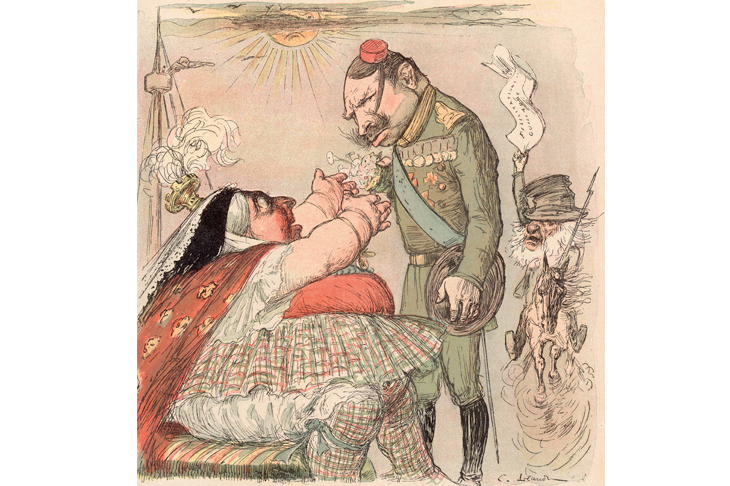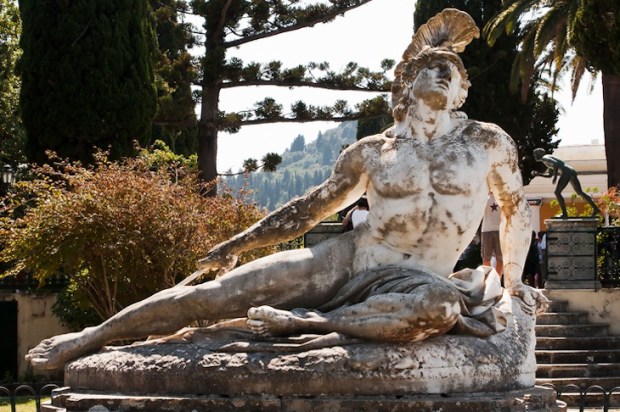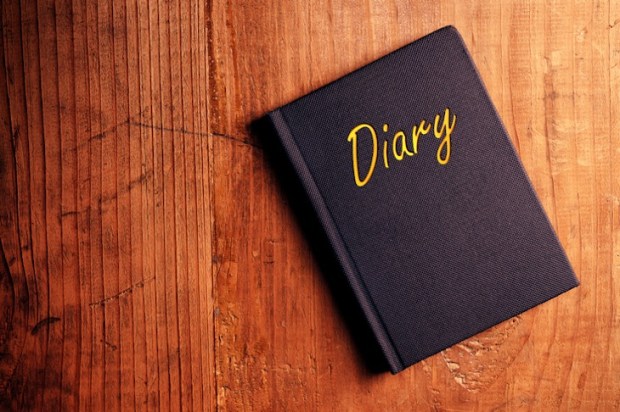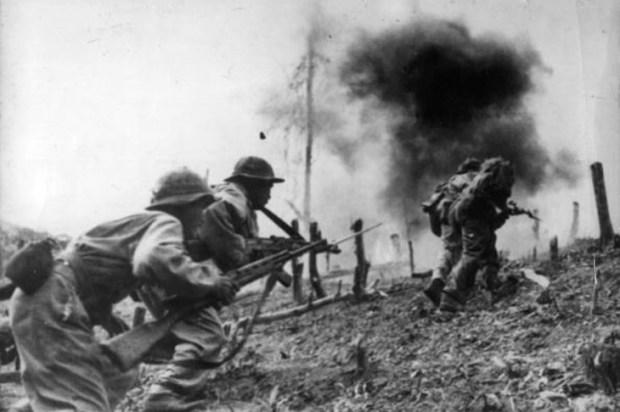In 2015 a pair of linen drawers belonging to Queen Victoria sold at auction for over £12,000. In old age Queen Victoria swathed herself in wraps and loose gowns which artfully concealed her figure, and her official photographers were ordered to photoshop her outline. But these knickers with their 45” waistband make plain that the 5’-queen was borderline obese. Annie Gray has written a culinary biography of Queen Victoria which tells us what she ate.
Breakfast was a hearty meal, often featuring lamb chops. For dinner Victoria ate rich French food, and her menus were always written in French. No plain Mrs Beeton-style cooking for the queen.
Dinner began with a choice of soups. One of these was a deceptively simple pale consommé, which involving a complex, labour-intensive process of clarifying veal stock with a paste of crushed eggshell and minced breastmeat. The next course was fish — turbot or whitebait were favourites — followed by an entrée of meat, often lamb chops again, or roast beef. Next came a roast, typically game, cooked on a spit. This was followed by vegetables, sourced from the royal kitchen gardens, pureed and creamed (all this was done by hard labour, pounding in a mortar and rubbing through a sieve). Finally came the entremets, a variety of sweet dishes such as meringues or profiteroles or jellies, elaborately moulded, piped and garnished. It’s hard to see how anyone remotely greedy could fail to get fat with a dinner like this every night.
In this wonderfully researched and entertaining book, Gray uncovers a slice of royal history which until now has been completely ignored. The palace kitchens were mass catering operations, feeding hundreds, not just the queen and the household. At Buckingham Palace the kitchen was built over a sewer. Raw sewage oozed through the floor and piled round the walls where the cooks worked, adding to the stench of dustbins and staff urinals. By far the best of the royal kitchens was Windsor, constructed by George IV like a chapel, airy and light and gleaming with a vast batterie de cuisine in burnished copper. Fowls and joints were roasted on spits over charcoal here until the 1890s.
When Victoria came to the throne, the royal dinner was served à la française. A first course of several dishes — soup, fish and meat — was set out on the table. Then the footmen removed the plates and set out a second course of roast meat or game and entremets. Table-deckers arranged the table with geometrical precision, setting off one dish against another in diagonal and horizontal designs. Eating was a complicated process, rather like a court dance, and you needed to know the steps.
Prince Albert had little interest in food. He was more concerned with etiquette, insisting that guests wore correct evening dress. He withdrew the royal family from the court. Instead of eating with the household, as Victoria had done before she married, the royals often dined separately.
As a young woman, Victoria’s weight see-sawed dramatically. She gave up eating lunch and her weight fell to seven stone when she was 19, but she put on two stone during the stressful Flora Hastings scandal two years later. During her marriage, courtiers’ memoirs make no reference to the queen’s greed, nor does she write about food in her journal (Freud might have something to say here). Only after Albert’s death did the grieving Queen console herself with comfort-eating and she ballooned — one reason why she was so reluctant to appear in public.
Her binge-eating was made easier by the move to a new method of serving, known as à la russe, which took place at court in the 1870s. Meals were served sequentially, one course after another, like a tasting menu in a restaurant today, by footmen who circulated briskly; and Victoria wolfed her food at record-breaking speed — she could chomp her way through all six courses of dinner in 30 minutes. She was served first, and the plates were whipped away as soon as she had finished, which meant that some guests barely had time to swallow a mouthful.
Victoria’s greed was life-affirming. Even at 80, and in spite of wearing false teeth, her appetite was undimmed. Her ladies marvelled as the old queen demolished huge chocolate ices followed by apricots. For Victoria, indigestion was a small price to pay. The symptom that most distressed the queen in her last months was loss of appetite.There is something pathetic about the old trencherwoman sitting through meals feeling too ill to eat.
Got something to add? Join the discussion and comment below.
Get 10 issues for just $10
Subscribe to The Spectator Australia today for the next 10 magazine issues, plus full online access, for just $10.
You might disagree with half of it, but you’ll enjoy reading all of it. Try your first month for free, then just $2 a week for the remainder of your first year.














Comments
Don't miss out
Join the conversation with other Spectator Australia readers. Subscribe to leave a comment.
SUBSCRIBEAlready a subscriber? Log in